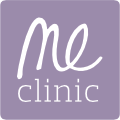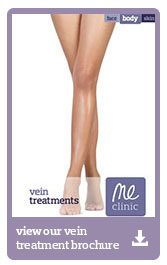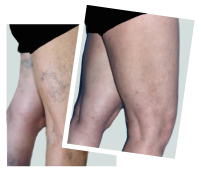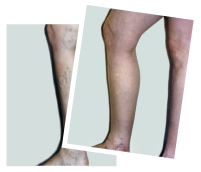- get an online consultation
- before & after images
- before & afters
- my face
- surgical
- non-surgical
- my body
- surgical
- non-surgical
- my breasts
- surgical restoration
- surgical enhancement
- my skin
- surgical
- non-surgical
- meet the team
- doctors
- nurses
- the team
- why me clinic?
- pricing & costs
- patient information
- contact us
- our locations
Surgical Warning: Any surgical or invasive procedure carries risks. Before proceeding you should seek a second opinion from an appropriately qualified health practitioner.
Read more on the Risks of Treatments
Common causes of varicose veins
Varicose veins can happen to anyone but there are certain factors that can increase the possibility of experiencing them. Factors include:
Family History: You are more likely to experience varicose veins if a parent had them.
Age: As a person ages, the valves in the veins may not work as efficiently as they once did leading to pressure in the veins that causes them to dilate.
Gender: Women are more prone to develop varicose veins due to hormonal changes.
Being overweight: Obesity can exert pressure on a person’s veins.
Damaged veins: An illness or accident can result in damaged varicose veins.
Standing or sitting for long periods: Veins are forced to work harder if you regularly stand or sit for extended periods of time. Avoid wearing high heels whenever possible.
Previous blood clots: Phlebitis, thrombophlebitis and deep vein thrombosis, venous insufficiency, poor blood circulation, and leg ulcers can cause varicose veins.
High Intensive exercises: Marathon running, heavy weights.
Symptoms of varicose veins
Varicose veins aren’t always painful, but they are often unsightly and unwanted. Signs and symptoms of varicose veins include:
- Veins that are a dark purple or blue colour
- Abnormal veins that have become twisted or bulged
- An achy feeling or heaviness in the legs
- Sensations such as burning, throbbing, or cramping in the legs
- Swelling in the lower legs
- Pain in the legs after long periods of sitting or standing
- Itchiness around the veins
Treatments for varicose leg veins
There are several effective varicose vein treatment pathways available. These include Sclerotherapy, Laser Treatment, Endovenous Laser Ablation Treatment (EVLT), and Varicose Vein Surgery. Following is a quick overview of the options.
Before 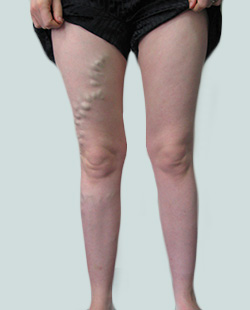
After 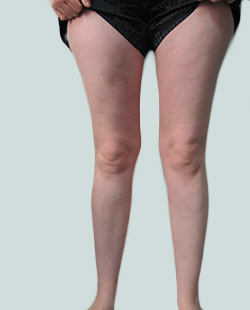
Performed By: Dr Ashley Granot (M0001026218) MBBS, FFMACCS (Med), FACP, FACNEM, ABBRM, MA5M Cosmetic Doctor, Melbourne
Sclerotherapy Treatment
Sclerotherapy is a treatment method that involves injecting a solution (sclerosant) into the affected vein using very small micro-needle punctures. This can cause the vein to scar and blood may reroute. The collapsed vein may reabsorb into local body tissue and potentially fade over time. Sclerotherapy may be considered for large veins in the legs, as well as smaller veins that could potentially deteriorate and become larger varicose veins. However, results can vary between individuals.
Me Clinic Foam Sclerotherapy Treatment costs start at around $435. Ultrasound Guided Sclerotherapy costs start at around $640.
Laser Treatment
Laser Treatment is another treatment option. This non-invasive treatment involves the absorption of laser light into the blood in the vein, which converts to heat and may cause the vein to shrink. This technique is often used to treat small spider veins on the face and may also be suitable for treating small veins on the legs and body. Laser treatments include Aura Laser, Intense Pulsed Light (IPL), Laser Genesis and YAG Laser. The cost of each treatment varies, starting from $350. However, results can vary between individuals.
Endovenous Laser Ablation Treatment (EVLT or EVLA)
Endovenous Laser Ablation Treatment (EVLT or EVLA), also known as radiofrequency ablation, is a treatment method that involves inserting a fibre-optic probe into the vein and using laser light or radio frequency to generate heat, which may cause the vein to shrink and close. This treatment may be considered for larger veins such as the Greater Saphenous and Small Saphenous veins. EVLT typically costs more than Sclerotherapy but less than vein surgery, starting from around $3,900. However, results can vary between individuals.
Varicose Vein Surgery
There are two types of varicose vein surgery: Ambulatory Phlebectomy and traditional vein surgery. Ambulatory Phlebectomy can be performed under local anaesthetic and involves the surgical extraction (vein stripping) of the veins by making only very small incisions. Traditional vein surgery, performed under general anaesthetic, is suitable for treating larger veins that require ligation (tying off). However, this is rarely offered as an option. It’s important to note that results can vary between individuals.
Varicose veins – diagnosis and treatment
Here is what you can expect before, during, and after your treatment of varicose veins at Me Clinic.
- Consultation
When you contact us, we will arrange a one-on-one consultation with an experienced Me Clinic physician who will:
- undertake an assessment of your individual condition
- explain the various treatment options and likely outcomes
- provide an overview of the treatment process and expected timeframes
- undertake a general medical consult (in most cases), and
- provide a quote outlining the associated costs of treatment.
- Book your procedure
If you decide to proceed with treatment, we will schedule a time for you to undergo the procedure.
- Conduct the procedure
The procedure will be performed. Your physician will advise on what to expect following the procedure. Depending on the chosen procedure, most patients are able to return home immediately following treatment.
- Post-procedure
Depending on the type of treatment performed, you may need to attend a post-procedure check-up. We will also be available for you to contact us if you need to discuss any concerns or have any questions.
How to prevent varicose veins
Some steps can be taken to improve blood flow and prevent varicose veins from developing or getting worse. These include:
- Exercising regularly
- losing weight
- avoiding sitting or standing for prolonged periods
- avoiding tight-fitting clothing
- putting your feet up when you can
- wear compression stockings
Costs involved with varicose vein treatments
There are a number of factors that can affect the cost of varicose vein treatments. a clear picture will be provided during your initial Me Clinic consultation with one of our physicians. Here is a summary of the main fees involved.
- Consultation fee
- Treatment fee, including anaesthetic fee if applicable
- The number of treatment sessions required
- The type of treatment
- Compression garment
- Post-procedure care
Choose Me Clinic to treat your varicose veins
Varicose vein treatment procedures at Me Clinic offer outstanding results. When you choose Me Clinic as a health care provider, you will benefit from working with a professional clinic with more than 35 years of experience in the cosmetic surgery field. Check out Me Clinic varicose veins treatment before and after photos and success stories from real patients, and contact us for a treatment plan that will transform your appearance.
We are your support team every step of the way, including a quality after-care program to monitor your recovery and ensure you receive the best possible care. Book a consult with Me Clinic today and get your transformative journey started.
Our Practitioners Who Specialise in Varicose Vein Treatments:
Surgical Warning: Any surgical or invasive procedure carries risks, including complications, side effects, and the possibility of unsatisfactory results. Before proceeding, you should seek a second opinion from an appropriately qualified health practitioner.
Frequently Asked Questions - Varicose Veins FAQs
Can you completely remove varicose veins?
Yes, you can completely remove varicose veins without any health risks. These veins are not major blood vessels and when varicose veins are removed the blood will reroute and flow through healthy nearby veins instead. New veins have the propensity to develop over time.
What are the veins on my legs?
The big veins on your legs are likely varicose veins, which occur when the veins become enlarged, dilated, and overfilled with blood. They can appear swollen and raised with a bluish-purple or red color.
Varicose veins are most commonly formed on the legs but can sometimes can form elswhere.
What is the most effective treatment method for varicose veins?
Varicose veins can be effectively treated by non-surgical options via Sclerotherapy and Endovenous Laser Ablation Treatment (EVLA or EVLT). Each treatment method suits different factors and conditions, and in scenarios where severe and large varicose veins exist, EVLA can be a more suitable varicose vein therapy method.
When to worry about varicose veins?
You should be concerned about varicose veins if you experience symptoms like severe pain, swelling, skin discoloration around the veins, or if the veins become warm, red, or tender to the touch, indicating possible complications such as thrombophlebitis. Additionally, if the skin over the veins starts to break down or if you develop an ulcer, seek medical attention, as these can be signs of serious circulatory problems.
